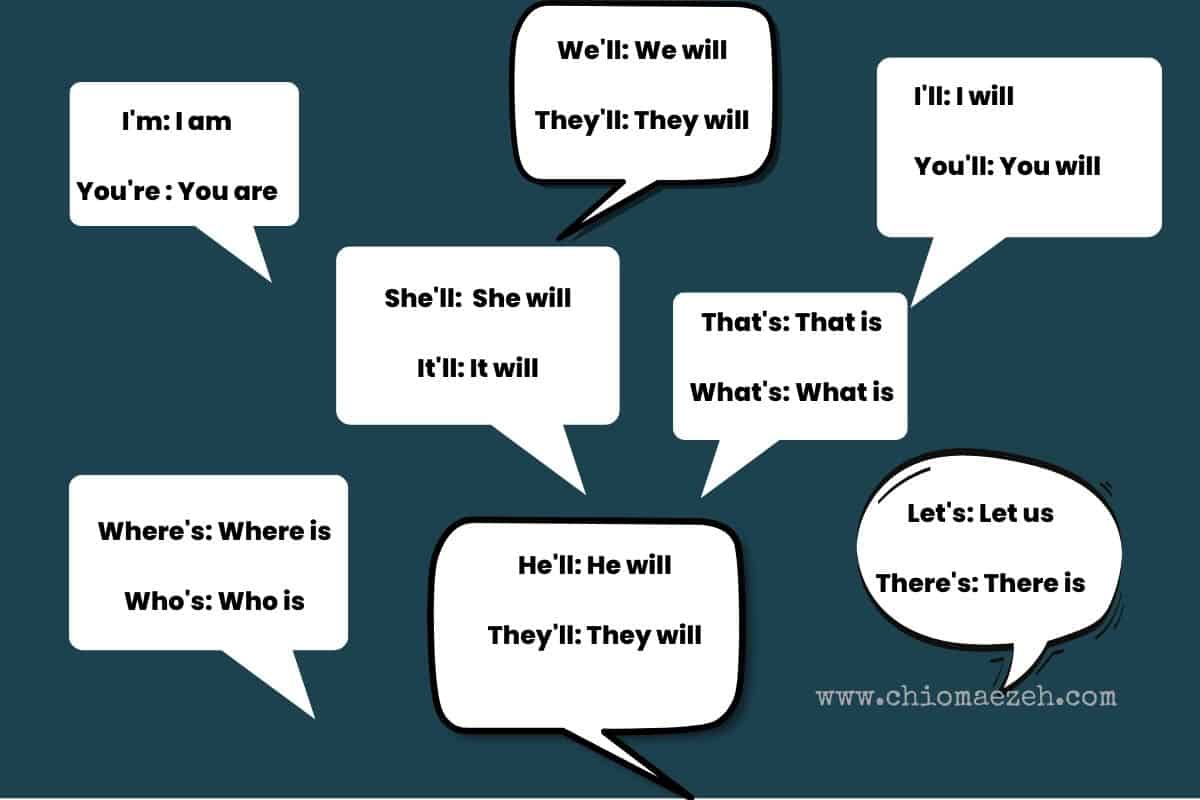7 Tips To Effectively Use Contractions In Dialogue Writing
Contractions are shortened forms of words or phrases, often formed by combining two words and omitting certain letters, which are then replaced by an apostrophe (e.g., “don’t” instead of “do not”).
In everyday speech, contractions are common and natural, so using them in your story’s dialogue can enhance authenticity and fluidity. In this article, we will discuss the importance of contractions in dialogue, how to use them effectively, and some common contractions to consider when crafting your characters’ conversations.

Let’s Talk
Are you a writer aspiring to pen a masterpiece that never fails to captivate? Look no further. Reach out to us and uncover how we can help you to take your writing to unprecedented heights!

What Are Contractions?
Contractions are shortened forms of words or phrases created by combining two words and omitting certain letters, which are then replaced by an apostrophe (e.g., “I’m” instead of “I am”).
Including contractions in dialogue can make your characters’ speech feel more natural and authentic, reflecting how people speak in real life.
Why Are Contractions Important In Dialogue Writing?
Contractions are important in writing dialogue for several reasons:
- To Appear Real: Using contractions makes the dialogue more realistic and natural, reflecting how people speak casually.
- Characterization: Contractions can reveal a character’s background, education level, or social status, as well as their emotions or attitude during a conversation.
- Readability: Contractions can improve the flow and pace of dialogue, making it easier and enjoyable for the reader to follow.
How To Effectively Use Contractions In Dialogue
When incorporating contractions into your dialogue, consider the following tips:
1. Match the Character’s Voice
To effectively use contractions, ensure they align with each character’s voice and personality.
For example, a formal, well-educated character like Professor Higgins from “My Fair Lady” may use fewer contractions than a relaxed, informal character like Huckleberry Finn from “The Adventures of Huckleberry Finn.” Consider your characters’ backgrounds and traits when deciding how often they should use contractions.
2. Consider the Context and Setting
The context and setting of a conversation play a crucial role in determining the appropriate use of contractions.
In more formal situations, such as a business meeting or a historical setting like a Jane Austen novel, characters might use fewer contractions or avoid them entirely. In contrast, casual or modern settings, such as a group of friends hanging out or a contemporary urban novel, may call for more frequent contractions to create an authentic atmosphere.
3. Maintain Balance
Strike a balance between using contractions for realism and readability without overdoing it. Overusing contractions can make dialogue feel forced or excessively informal while underusing them can result in stilted, unnatural speech. Aim for a natural flow that reflects each character’s unique voice.
4. Vary Your Contractions
To prevent your dialogue from becoming repetitive, vary the contractions used throughout your story. Mixing up the types of contractions will keep the conversations engaging and dynamic. Here are some common contractions to consider:
- I’ll: I will
- You’ll: You will
- He’ll/She’ll/It’ll: He will/She will/It will
- We’ll: We will
- They’ll: They will
- That’s: That is
- What’s: What is
- Where’s: Where is
- Who’s: Who is
- Let’s: Let us
- There’s: There is
5. Be Mindful of Regional Differences
When writing dialogue for characters from different regions or cultures, be aware of variations in contraction usage.
For example, some contractions may be more prevalent in American English than in British English or vice versa, such as “I’ve” (I have) being more common in British English. Research regional speech patterns to accurately portray your characters and their backgrounds.
Common Examples Of Contractions
Here are some common contractions to help you get started with incorporating them into your dialogue:
- I’m: I am
- You’re: You are
- He’s/She’s/It’s: He is/She is/It is
- We’re: We are
- They’re: They are
- I’ve: I have
- You’ve: You have
- We’ve: We have
- They’ve: They have
- I’d: I had/I would
- You’d: You had/You would
- He’d/She’d: He had/He would/She had/She would
- We’d: We had/We would
- They’d: They had/They would
- Don’t: Do not
- Doesn’t: Does not
- Didn’t: Did not
- Can’t: Cannot
- Couldn’t: Could not
- Won’t: Will not
- Wouldn’t: Would not
- Isn’t: Is not
- Aren’t: Are not
- Hasn’t: Has not
- Haven’t: Have not
- Hadn’t: Had not
Final Notes On Contractions In Dialogue
Effectively using contractions in dialogue can significantly enhance the authenticity and fluidity of your story. By paying attention to character voice, context, balance, variety, and regional differences, you can create engaging, believable conversations that will captivate your readers.
Keep practicing and refining your use of contractions, and remember that a well-crafted dialogue is an essential tool for successful storytelling.


![What Are The Types Of Dialogue In A Story? [Explained]](https://chiomaezeh.com/wp-content/uploads/2023/03/types-of-dialogue-in-a-story-1-768x512.jpg)
![What Is The Setting Of A Story? [Explained With Examples for Authors]](https://chiomaezeh.com/wp-content/uploads/2023/02/Setting-of-a-story-featured-1-768x512.jpg)


